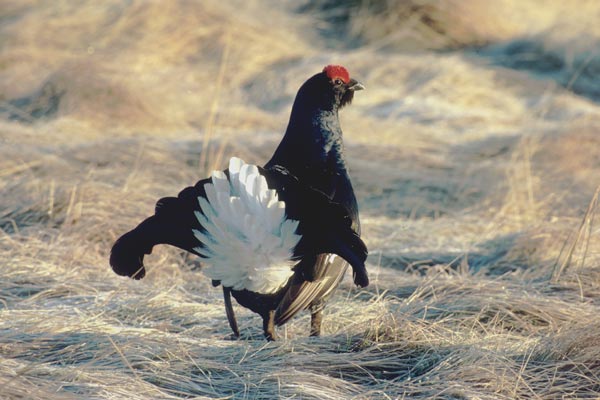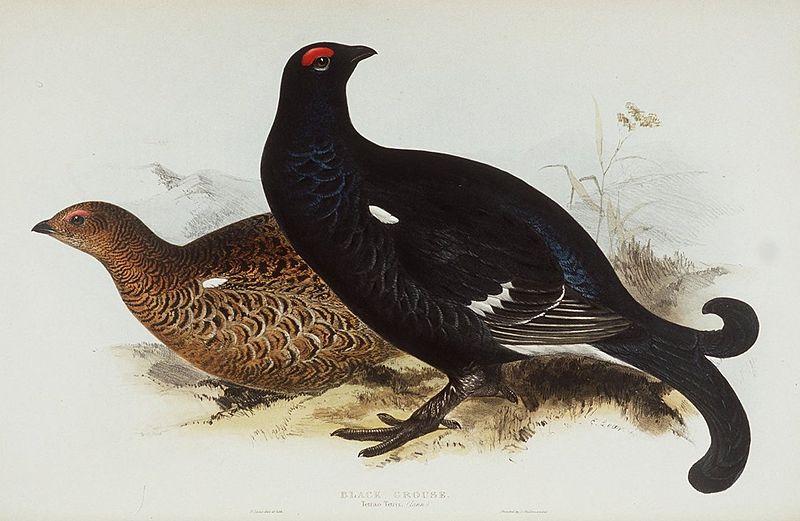Biodiversity
Related Links
Latest News
A Starring Role for Nantclwyd’s Lesser Horseshoe Bats
22.05.2015
Living Landscape Brought Back to Life
05.12.2014
More Information
Visit the Clwydian Range and Dee Valley AONB pages to find out about what is being done to conserve black grouse in Denbighshire.
Facebook Page
Black grouse
The black grouse is a game bird which has undergone dramatic population declines in Wales. Numbers are now slowly increasing through engagement with local graziers and the encouragement of techniques to manage their upland habitat more favourably.
 Description and identification: Males are all black, with a blue sheen. They have red wattles above each eye, white wing-bars and bright white under-tail feathers. The tail itself is lyre-shaped. The females are less conspicuous with grey-brown feathers, and smaller wattles above the eyes.
Description and identification: Males are all black, with a blue sheen. They have red wattles above each eye, white wing-bars and bright white under-tail feathers. The tail itself is lyre-shaped. The females are less conspicuous with grey-brown feathers, and smaller wattles above the eyes.
Habitat: The black grouse relies on a mosaic of upland habitats including moorland, farmland and bog, with scattered trees or close to areas of forestry.
Diet: The diet of the black grouse varies depending on the time of year. Bilberry and heather are important food plants. In spring buds and shoots are eaten, whilst in summer the seeds of sedges and rushes also become important. Berries are eaten in autumn and winter, whilst chicks are fed on insects and spiders.
Ecology and reproduction: Male black grouse compete with each other, and for the attention of females, during the lek. In the spring the males attract females with bubbling calls and posturing. The most dominant males will have the best positions at the lekking site and mate with most females. After mating there is no pair bond between males and females. The female will lay brood of six to 13 eggs in a moss-lined scrape amongst the heather, and has sole responsibility for raising the young.
 Distribution: The black grouse has a large range, including parts of Russia, Asia, northern Europe and the Alps. In the UK, black grouse are found in upland areas of Wales, the Pennines and Scotland. In Denbighshire black grouse are found in various upland areas including the Clwydian Range, Llandegla Moor and Llantysilio Mountain.
Distribution: The black grouse has a large range, including parts of Russia, Asia, northern Europe and the Alps. In the UK, black grouse are found in upland areas of Wales, the Pennines and Scotland. In Denbighshire black grouse are found in various upland areas including the Clwydian Range, Llandegla Moor and Llantysilio Mountain.
Threats: The global black grouse population is decreasing and its range contracting. The main reason for this is the loss and degradation of its habitat, for example through over-grazing and agricultural intensification. In Denbighshire, one of the main problems has been the lack of grazing and other management of heathland, which has led to a decline in habitat suitability. Black grouse require a mosaic of young and mature heathland plants for shelter and food, which requires management such as grazing and burning.
Status: The black grouse is a priority species for conservation action at a UK, Wales and Denbighshire level.



